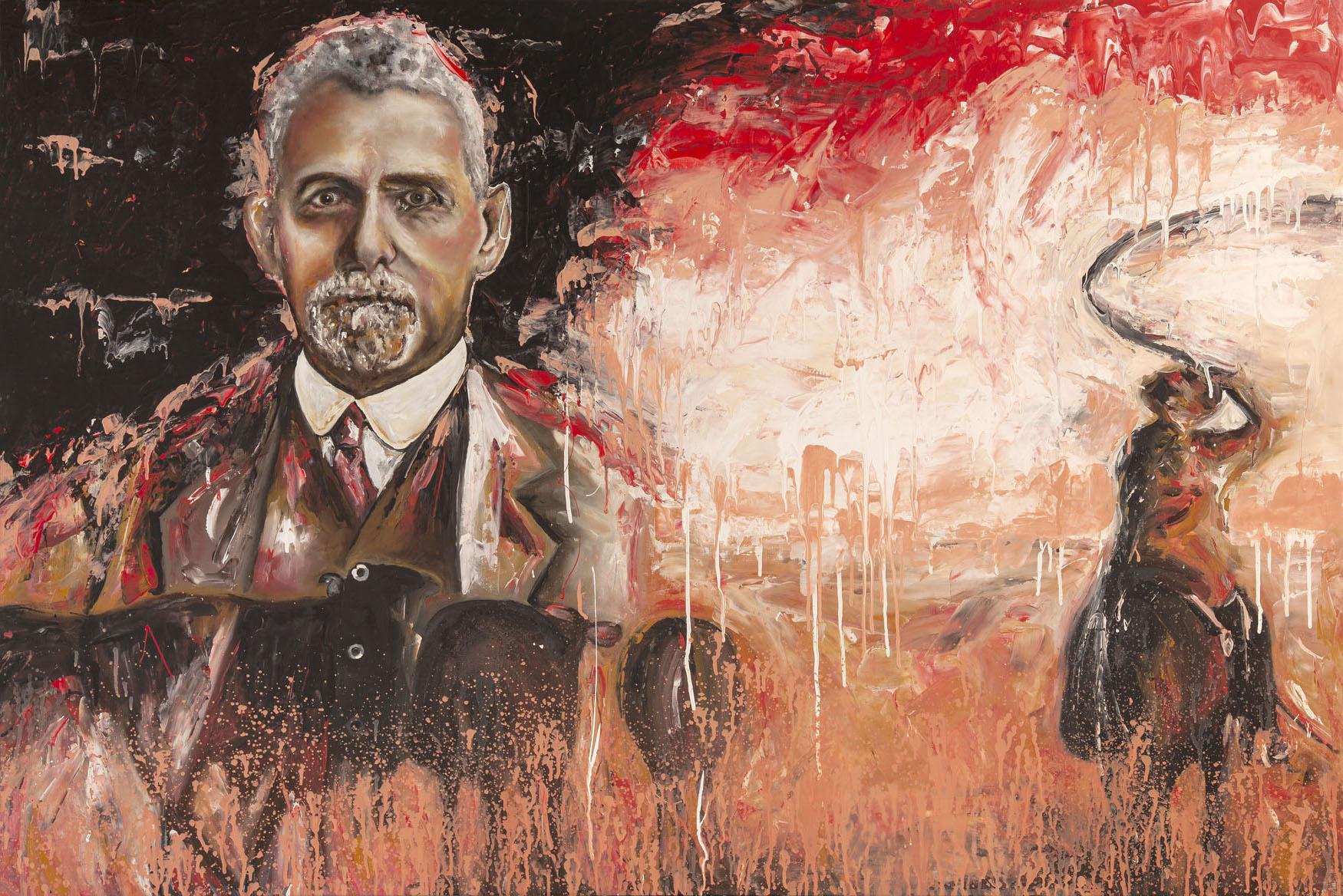
Sir Sidney Kidman
Sir Sidney Kidman (1857-1935), pastoralist, was born near Athelstone, Adelaide.
Sidney’s father George Kidman died about six months after Sidney’s birth. His son was educated at private schools in suburban Norwood but left home with five shillings in his pocket and riding a one-eyed horse which he had bought with laboriously acquired savings.
The boy shared a dug-out in the bank of a dry creek with an Aboriginal known among whites as Billy. Treating him seriously as a friend and equal, Sidney learned from him tracking and other bush skills and so became a better bushman than most white adults.
Kidman contracted to cart supplies in the country between the isolated settlements at Mount Gipps, Wilcannia, Swan Hill (Victoria), Menindee, Bourke, Tibooburra, Louth and Cobar. He also drove mobs of horses and cattle, sometimes to market in Adelaide. Following the discovery of copper at Cobar in the early 1870s he set up a butcher’s shop and like James Tyson at the Bendigo gold rush twenty years earlier, made enough money to establish himself as a large squatter. In 1878 he inherited £400 from his grandfather and traded with it successfully. He increased his capital by setting up coaching businesses in western New South Wales and in Western Australia. He supplied them with horses and began providing the British army in India with remounts. He grew richer still by continually buying cattle and selling them to his brother Sackville, who conducted a large butchering business at Broken Hill.
These activities were a means to an end. In 1886 Kidman bought his first station, Owen Springs on the Hugh River, south-west of Alice Springs. Long before his thirtieth birthday he had conceived the idea of buying a chain, later two chains, of stations stretching in nearly continuous lines from the well-watered tropical country round the Gulf of Carpentaria, south through western Queensland to Broken Hill and across the border into South Australia within easy droving distance of Adelaide. Many stations on this ‘main chain’ were watered by Cooper’s Creek and the Georgina and Diamantina rivers which sometimes brought northern tropical rain-waters to the centre even during droughts.
By the 1890s he had begun to acquire his second chain of stations strung along the Overland Telegraph line from the Fitzroy River and Victoria River Downs in the north to Wilpena station in the Flinders Ranges near Adelaide. Thus, by moving stock from drought-stricken areas to others, by selling in markets where the price was highest, by his detailed knowledge of the country and by his energy and bushcraft he withstood the depression of the 1890s and the great drought of 1902. By the time of World War I he controlled station country considerably greater in area than England or Tasmania and nearly as great as Victoria.
By the war’s end he had become a national institution, having given fighter aeroplanes and other munificent gifts to the armed forces. In 1920 he gave to the Salvation Army £1000 and a half share in one of his cattle-stations. In 1921 he gave his country home at Kapunda, the scene of his annual horse-sales, to the South Australian government for a district high school. It may have been mere coincidence that he was knighted next day.
In old age he suffered from increasing deafness and rheumatism, but otherwise retained his faculties unimpaired until his death in Adelaide on 2 September 1935; he was buried in Mitcham general cemetery. Kidman’s estate, amounting to some £300,000, was mostly left to his family, but much went to charities.


